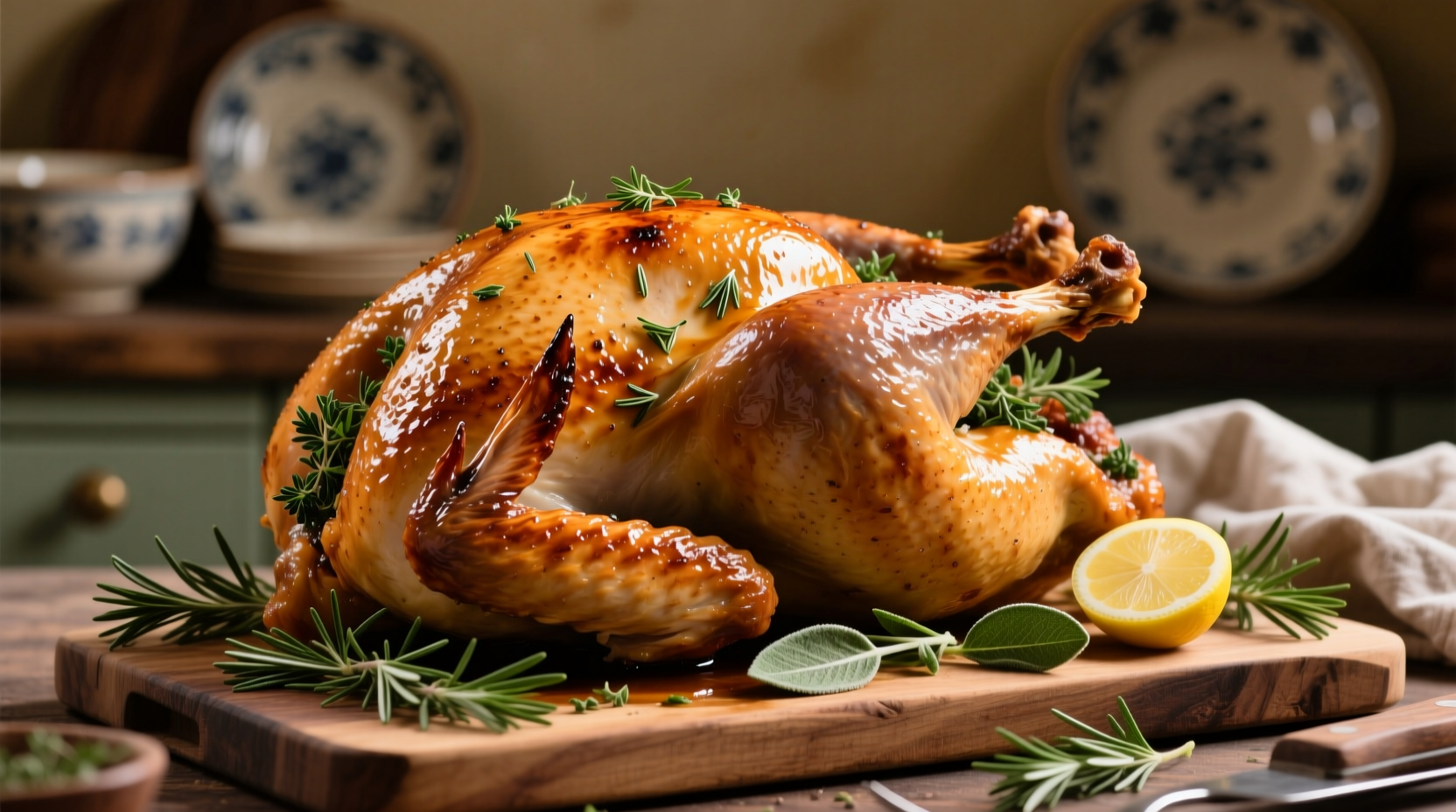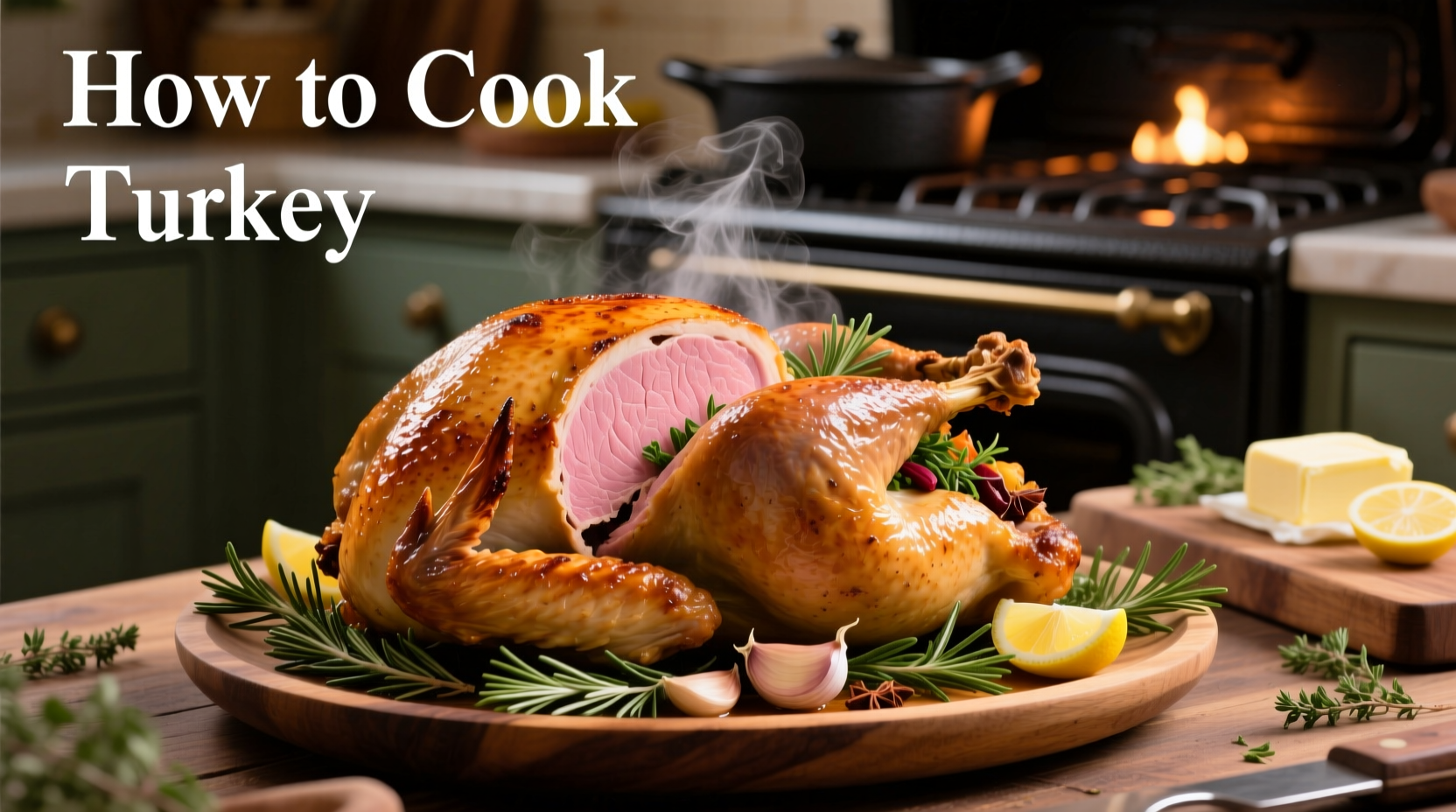Perfectly cooked turkey reaches an internal temperature of 165°F (74°C) in the thickest part of the breast and thigh. Allow 13-15 minutes per pound at 325°F (163°C), plus 30-60 minutes resting time before carving for juiciest results. Always use a meat thermometer for food safety.
Mastering the art of cooking turkey transforms holiday meals from stressful chores to celebrated culinary triumphs. Whether you're preparing your first Thanksgiving centerpiece or refining decades of roasting experience, this guide delivers professional techniques that guarantee moist, flavorful turkey every time. We'll walk through each critical phase with precision-tested methods backed by food science principles.
Preparing Your Turkey for Success
Proper preparation sets the foundation for exceptional results. Start with thawing: allow 24 hours in the refrigerator for every 4-5 pounds of turkey. Never thaw at room temperature to prevent bacterial growth. After thawing, remove the neck and giblets, then rinse the cavity thoroughly with cold water and pat completely dry with paper towels—moisture is the enemy of crispy skin.
Seasoning strategy matters more than you might think. For maximum flavor penetration, apply a dry brine 24-48 hours before cooking: generously coat the entire bird with kosher salt (about 1 tablespoon per 5 pounds) and refrigerate uncovered. This technique seasons from within while improving moisture retention. Add herbs and spices just before roasting to preserve their volatile compounds.
Cooking Methods Compared: Finding Your Perfect Approach
| Method | Best For | Cooking Time | Key Advantage |
|---|---|---|---|
| Traditional Roasting | 8-16 lb turkeys | 13-15 min/lb | Even browning, familiar technique |
| Spatchcocking | All sizes | 45-60 min | Faster cooking, crispier skin |
| Reverse Searing | 12+ lb turkeys | 2-3 hours | Precise temperature control |
Traditional roasting remains popular for its hands-off approach. Position the turkey breast-up on a rack in a roasting pan, adding 1 cup of broth to the bottom to prevent drippings from burning. Insert an oven-safe meat thermometer into the thickest part of the breast, avoiding bone. For optimal results, cook at 325°F (163°C)—higher temperatures risk drying out the breast before the dark meat cooks through.
Spatchcocking (removing the backbone and flattening the bird) reduces cooking time by nearly 50% while promoting even browning. This method particularly benefits home cooks without convection ovens, as the flattened shape exposes more surface area to heat. Professional kitchens increasingly favor this technique for its reliability and crispier skin results.

Critical Temperature Milestones
Temperature control separates successful turkey cooking from disappointing results. The USDA Food Safety and Inspection Service confirms turkey is safe to eat at 165°F (74°C) in both breast and thigh areas. However, food science reveals optimal quality occurs through careful temperature management:
- 120°F (49°C): Collagen begins breaking down in dark meat
- 140°F (60°C): Breast meat proteins start coagulating
- 150°F (66°C): Ideal target before resting (will rise to 165°F)
- 165°F (74°C): Final safe temperature after resting
Remove the turkey from the oven when the breast reaches 150-155°F (66-68°C). The residual heat will carry it to the safe 165°F mark during resting—a critical phase many home cooks skip. This approach prevents the common mistake of overcooking that leads to dry breast meat.
The Underrated Resting Phase
Resting isn't optional—it's essential for juicy results. When turkey finishes cooking, proteins are tightly contracted. As it rests, these proteins gradually relax, allowing juices to redistribute throughout the meat. For best results:
- Cover loosely with foil to retain heat without trapping steam
- Rest for 30 minutes for birds under 12 pounds
- Allow 45-60 minutes for turkeys over 15 pounds
- Elevate on a cutting board to prevent soggy skin
National Turkey Federation research shows properly rested turkey retains up to 30% more moisture than immediately carved birds. This phase also allows you to prepare gravy using the rich pan drippings while the turkey reaches perfect serving temperature.
Avoiding Common Pitfalls
Even experienced cooks make these preventable mistakes:
- Stuffing the turkey: Creates food safety risks and uneven cooking. Prepare stuffing separately for better texture and safety.
- Trussing too tightly: Restricts heat circulation. If trussing, use minimal twine just to secure wings and legs.
- Guessing doneness: Visual cues are unreliable. Always use a calibrated meat thermometer.
- Overbasting: Opening the oven frequently drops temperature. Baste no more than twice during cooking.
Food safety is paramount when handling poultry. The USDA Meat and Poultry Hotline emphasizes that undercooked turkey poses serious salmonella risks. Never rely on pop-up timers—they often trigger before the thickest parts reach safe temperatures. Instead, verify multiple points with an instant-read thermometer.
Carving for Maximum Presentation
Proper carving technique ensures every slice remains moist and visually appealing. Start by removing legs and wings, then slice breast meat against the grain in 1/4-inch slices. Keep your knife sharp—a dull blade tears meat fibers, releasing precious juices. For elegant presentation, overlap slices slightly on a warmed platter.
Leftover turkey maintains best quality when stored within two hours of cooking. Remove meat from the bone and store in airtight containers for up to four days in the refrigerator, or freeze for up to six months. The National Center for Home Food Preservation confirms proper storage prevents bacterial growth while preserving texture.











 浙公网安备
33010002000092号
浙公网安备
33010002000092号 浙B2-20120091-4
浙B2-20120091-4